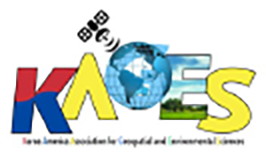Abstract
As part of natural resource education in the Arthur Temple College of Forestry and Agriculture at Stephen F. Austin State University (SFASU), students were instructed to take areal and linear measurements of grounds remotely using available platforms including aerial orthomosaic derived from UAS (unmanned aerial system) acquired imagery, Google Earth Pro, and Pictometry. The onscreen measurement was conducted at five different map scales, 1/1000, 1/2000, 1/3000, 1/4000, and 1/5000. Accuracy of the measurements was assessed by comparing the onscreen measurements to ground truth data verified with a measuring tape. Results show that measurements based on the UAS were more accurate than other platforms at all scales, resulting in lower RMSE (root mean square error). However, this advantage diminished when the scale approached 1/5000 where features were too small to identify onscreen. This scale related accuracy is more profound with Google Earth Pro. Overall, all three platforms performed its best at the 1/1000 scale, while accuracy decreased when an image was zoomed out to a smaller scale. All three platforms can be used with confidence at the 1/3000 scale or larger such as 1/1000 or 1/2000. For linear measurements, UAS was significantly more accurate than others. For areal measurements, Pictometry was significantly less accurate than others.
Recommended Citation
Hung, I-Kuai; Kulhavy, David L.; Unger, Daniel R.; Viegut, Reid A.; Zhang, Yanli; and Schiwitz, Nicholas C.
(2023)
"Accuracy Assessment of Measuring Linear and Areal Features in Aerial Imagery,"
International Journal of Geospatial and Environmental Research: Vol. 10:
No.
1, Article 3.
Available at:
https://dc.uwm.edu/ijger/vol10/iss1/3

